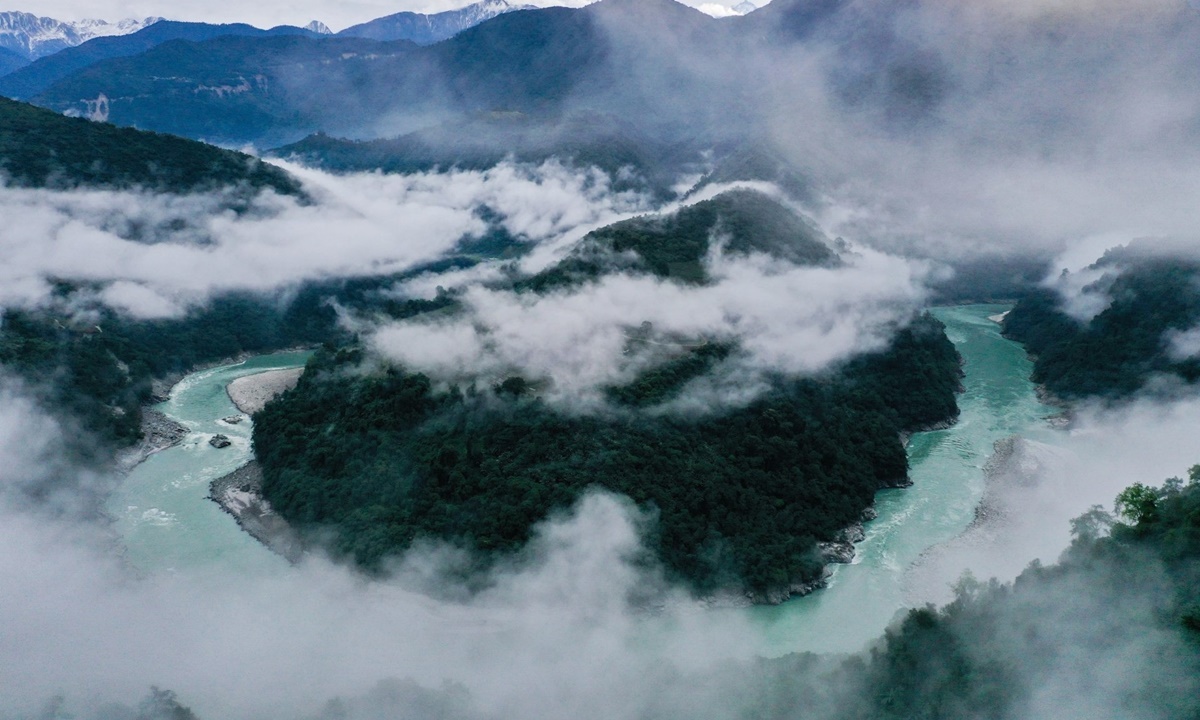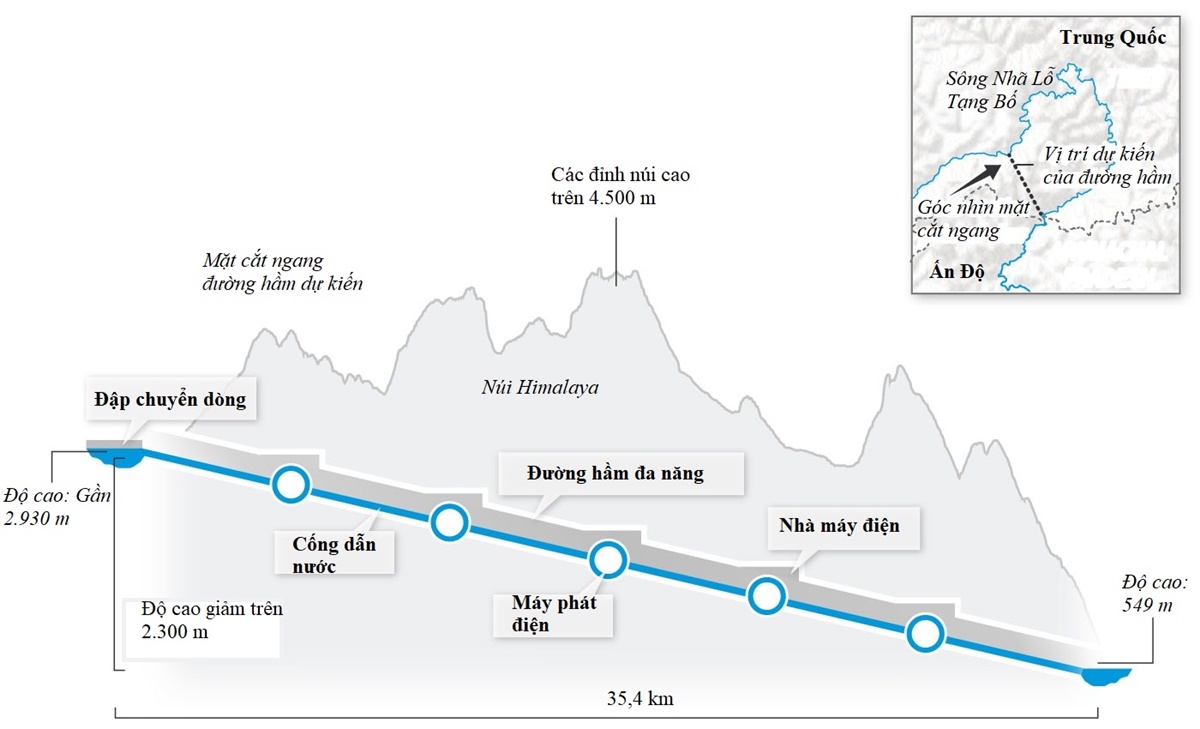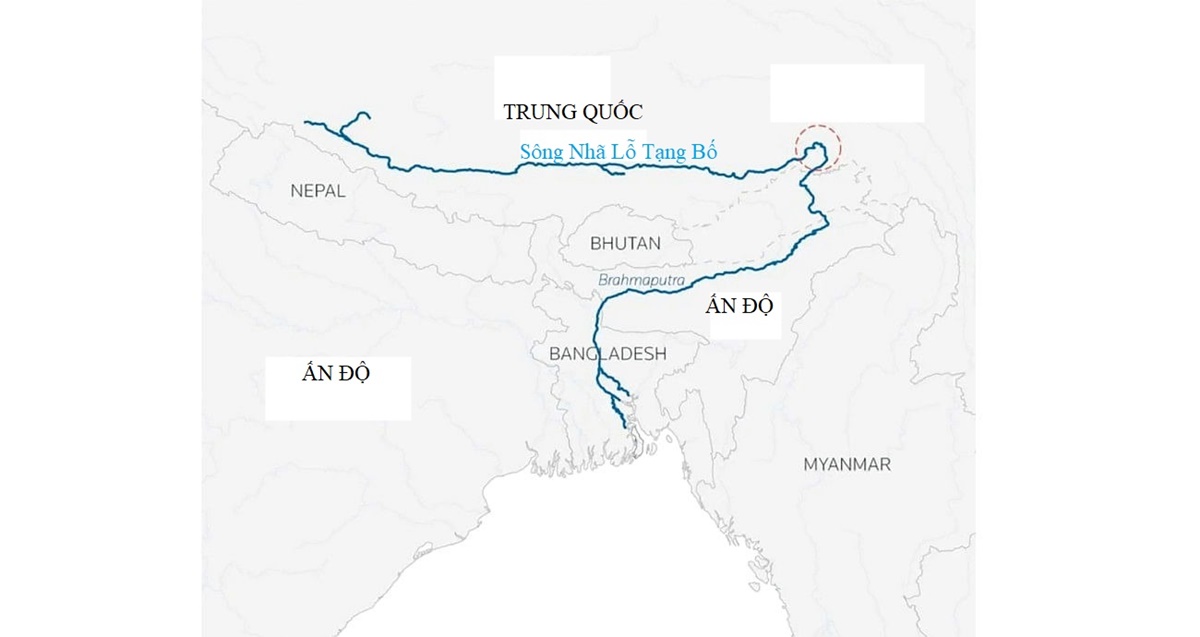Last month, China began construction on a massive hydropower project on the Yarlung Tsangpo River at the edge of the Tibetan Plateau. Considered an "engineering marvel," the dam plays a central role in Beijing's long-term strategy to achieve self-sufficiency in essential sectors like energy.
To complete the 167 billion USD project, Chinese engineers will dig tunnels through towering mountains to harness hydropower from the river, which flows through the deepest and possibly longest canyon on earth.
 |
A section of the Yarlung Tsangpo River. Photo: Xinhua |
A section of the Yarlung Tsangpo River. Photo: Xinhua
Upon completion, the project could generate three times the output of the Three Gorges Dam, China's current largest hydropower plant, which powers approximately 40 million homes.
The project demonstrates China's determination to achieve self-reliance in key areas, from technology to food. This drive is intensifying amid growing competition between Beijing and Washington.
In 2023, China imported nearly 25% of its energy to fuel economic development, and Beijing is actively seeking ways to reduce this dependence.
The project is also expected to inject substantial funds into China's slowing economy, creating jobs and business opportunities in Tibet, one of the country's most remote regions.
A planned 7 billion USD high-voltage transmission network will carry electricity from the Tibetan dam to Guangdong province, an economic hub on China's southeastern coast, as well as to Hong Kong and Macau.
 |
Projected design of the hydropower dam on the Yarlung Tsangpo River. Graphic: WSJ |
Projected design of the hydropower dam on the Yarlung Tsangpo River. Graphic: WSJ
While China hasn't released detailed construction plans, the project outlines a risk-averse approach. It likely won't rely on a single, mountain-based mega-dam.
Instead, according to online posts by Chinese hydrologists and government statements, engineers will bore tunnels through the mountains, starting high above and ending below the Yarlung Tsangpo Grand Canyon.
Essentially, they will cut across a U-shaped bend where the river drops almost vertically for nearly 3.2 km over a stretch of more than 480 km. The project will have dams at both ends of the tunnel, diverting water to power turbines.
Experts believe the project focuses on a "run-of-the-river" design, utilizing water flow without the need for a large reservoir.
"The dam doesn't take water out of the river," said Mark Giordano, a geography professor at Georgetown University. "They will divert water from a section of the river within China, through a tunnel, and return it to the river on the Chinese side before it flows into India."
"It's a brilliant idea," said Ruth Gamble, an environmental historian at La Trobe University in Australia, who specializes in Himalayan rivers. "I don't like hydropower dams, but this project avoids all the mistakes of previous dams."
However, the Yarlung Tsangpo dam raises concerns about cross-border impacts, as the river flows into northeastern India and then through southern Bangladesh.
 |
The Yarlung Tsangpo River flows through China, India, and Bangladesh. Graphic: Daily Star |
The Yarlung Tsangpo River flows through China, India, and Bangladesh. Graphic: Daily Star
The dam is being built in a seismically active zone. In 1950, an 8.6 magnitude earthquake, centered about 80 km from where the Yarlung Tsangpo enters India, killed more than 4,500 people and triggered hundreds of landslides, some blocking the river's flow.
"This is a high earthquake risk area, a pretty clear risk," Giordano said.
Over the past few decades, China has undertaken numerous large-scale hydropower projects to boost renewable energy. The Three Gorges Dam, completed in 2006, created a reservoir about 644 km long on the Yangtze River, displacing 1.3 million people.
While the Three Gorges Dam faced significant skepticism, the Yarlung Tsangpo project has encountered less opposition, suggesting growing confidence in China's hydropower endeavors.
However, some opposition remains across the border. Pema Khandu, Chief Minister of Arunachal Pradesh, India, called the dam a "water bomb" posing an existential threat to his people, as untimely water releases could worsen seasonal flooding.
 |
The Yebatan Dam, one of many dams China is building along the upper reaches of the Yangtze River. Photo: Xinhua |
The Yebatan Dam, one of many dams China is building along the upper reaches of the Yangtze River. Photo: Xinhua
India has responded with plans to construct its own mega-dam on the river to control the flow.
India and China are also engaged in a territorial dispute over Arunachal Pradesh. Relations deteriorated in 2020 after a border clash killed at least 20 Indian and 4 Chinese soldiers.
China, India, and Bangladesh have no shared agreement on managing the Yarlung Tsangpo. Upon entering India, it's called the Brahmaputra and eventually merges with the Ganges in Bangladesh.
China has dismissed criticism from downstream nations worried about changes in water flow and sediment. Chinese Foreign Ministry spokesman Guo Jiacun said the project will "accelerate clean energy development, improve the lives of local people, and help proactively respond to climate change."
According to China, the Yarlung Tsangpo's potential remains largely untapped. In 2022, a group of Chinese hydrologists estimated that only 2% of the river's potential hydropower capacity is currently being utilized.
Vu Hoang (WSJ, AFP, Reuters)












